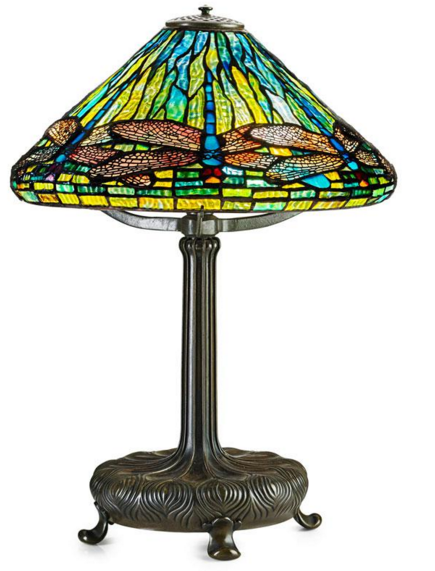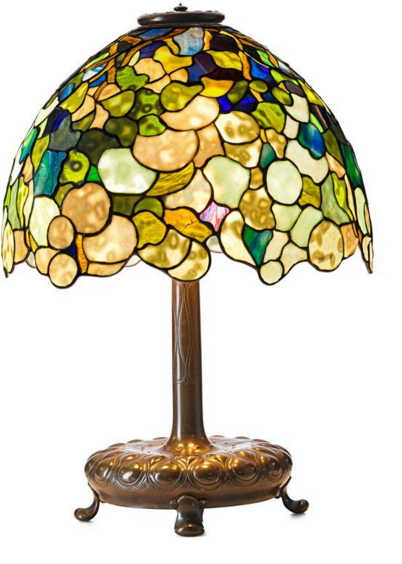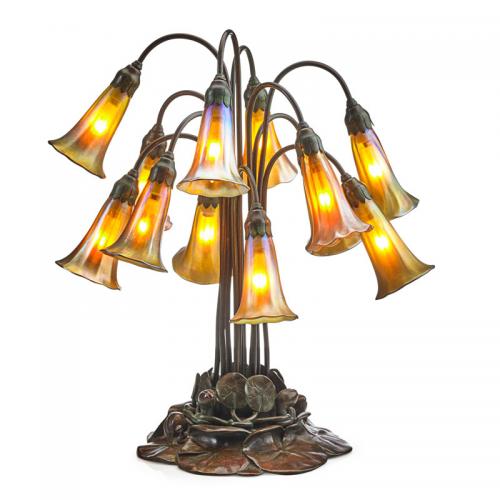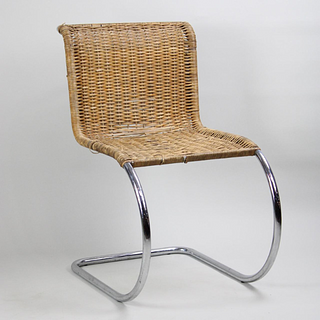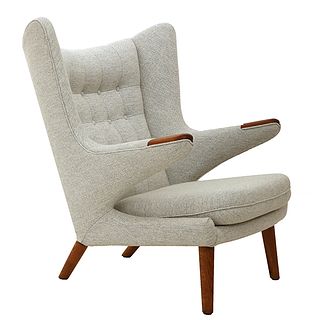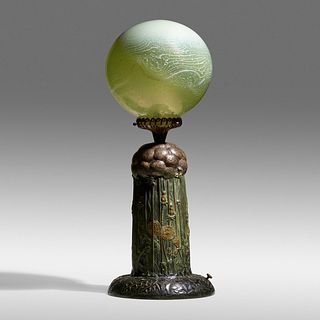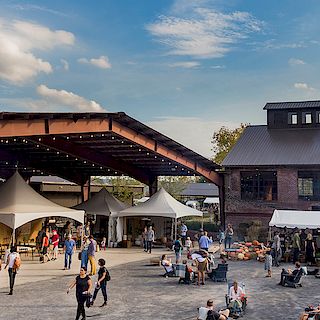The Pursuit of Beauty with Louis Comfort Tiffany
Louis Comfort Tiffany declared that his life-long goal was “the pursuit of beauty.” Tiffany’s quest for his goal began with painting, continued with innovative interior design and largely focused on glassmaking. The aesthetics and shifting colors of his glass work elevated Tiffany to become one of the most influential artists in Art Nouveau. He is considered to have been the foremost American designer of decorative art objects at the turn of the century.
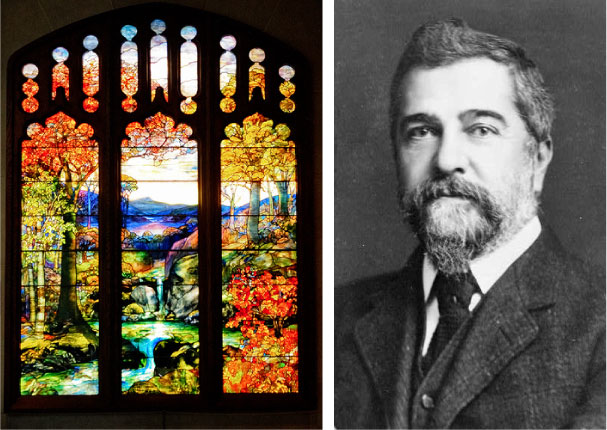
Left: Autumn Landscape, Tiffany Studios, 1902-32, on exhibit at The Metropolitan Museum of Art; Right: Louis Comfort Tiffany
Louis Comfort Tiffany was born on February 18, 1848 in New York City. Louis was the son of Charles Lewis Tiffany, the founder of Tiffany & Co. Although his father had founded the most prestigious silver and jewelry company in America, Louis chose another direction.
After visiting Victoria and Albert Museum in London, Tiffany was impressed by the collection of Roman and Syrian glass in the museum. Inspired, he decided to work with glass. At the beginning of his career, Tiffany used cheap jelly jars because of their mineral impurities which couldn’t be found in fine glass. He used opalescent glass in various colors and textures and developed his own unique style. Tiffany also developed the copper foil technique, allowing for greater glass detail.
Tiffany was greatly influenced by the philosophy of the Arts and Crafts Movement. He believed in producing high quality, hand made goods in large numbers and succeeded in fulfilling this Arts and Crafts Movements philosophy. However, Tiffany produced items that ranged from the very affordable to those made exclusively for the upper class.
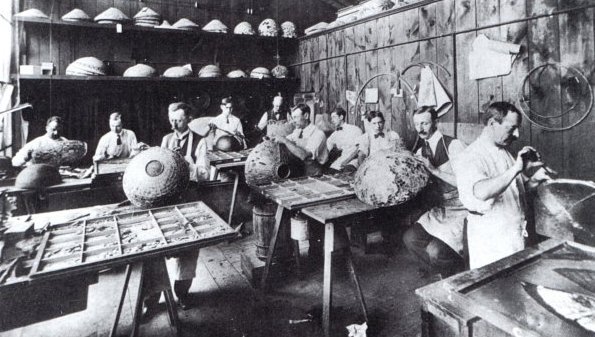
Lamp Shop, Tiffany Studios (From Rebel in Glass, Robert Koch, Leadedlamps.com)
One of the most famous Tiffany works is Autumn Landscape (pictured above), which used leaded Favrile glass. Tiffany created the variegated surface by wrinkling the pot-metal glass. The mottled and confetti glass created unusual light effects.
Tiffany and his design studio captured the beauty of nature and depicted it in stained glass lamps. These lamps follow a botanical design, which frequently used flowers, dragonflies, spiders, butterflies and peacock feathers. The majority of Tiffany’s lamps can be divided into six categories: irregular upper border, irregular lower border, favrile, geometric, transition to flowers, flowered cone and flowered globe.
Conveniently, you don’t need to visit multiple museums to see the work of Tiffany Studios! Rago brings the works to an audience on February 26th in the Una Buona Vita, A Private New Jersey Collection auction. This Dragonfly Table Lamp is a classic piece from Tiffany Studios with its lavish colors, dragonfly design, painted bronze and leaded slag glass.
Tiffany Studios Dragonfly table lamp, Estimate $40,000-60,000
The Hydrangea Snowball Lamp pictured below is another timeless Tiffany piece. The branches and blowers indicate a Tiffany Studios style of a typical irregular lower border lamp with an openwork crown edge. The ingenuity and color in the glass demonstrated the beauty of nature.
Tiffany Studios, Etc. Hydrangea "Snowball" lamp, Estimate $25,000-35,000
The lily lamp is another staple to the Tiffany Studios collection. When the lily lamp was created, it was the first Tiffany lamp that allowed bulbs to be hung vertically, rather than extending horizontally or pointed up, offering new ways in which light might be cast. This painted bronze, favrile glass Twelve-light table lamp below shows off the natural forms in Tiffany Studios creations.
Tiffany Studios Twelve-light lily table lamp, Estimate $20,000-30,000
Article sources and further reading: The Morse Museum, The Metropolitan Museum of Art
- Sleeping Diane: The Story Behind Donato Creti’s Dreamlike Drawing
- European Elegance: Doyle’s English & Continental Furniture & Decorative Arts Auction
- Old Masters and Opulence: Doyle’s October Auction Brings Centuries of Art to Life
- Apfelicious! The Iris Apfel Sale (Day 1) by Millea Bros.
- Mr. Brainwash: Where Pop Culture Meets Positivity
- Unearthing the Past: The Robert H. Baer Archaeology Collection Comes to Auction
- The Legacy of Stradivari: A Cremona Violin from 1737
- Everyday Elegance: The Pewter Collection of Richard Graver
- The History of Moorcroft Pottery: From Art Nouveau Roots to Collector Treasure
- Raise a Can: Rare Breweriana Hits the Auction Block



 EUR
EUR CAD
CAD AUD
AUD GBP
GBP MXN
MXN HKD
HKD CNY
CNY MYR
MYR SEK
SEK SGD
SGD CHF
CHF THB
THB